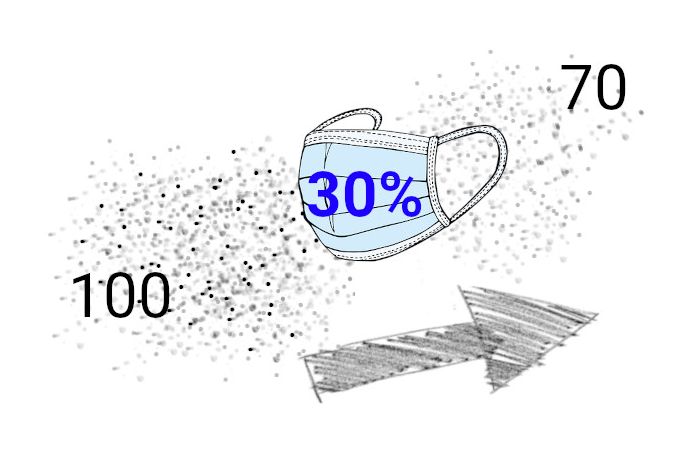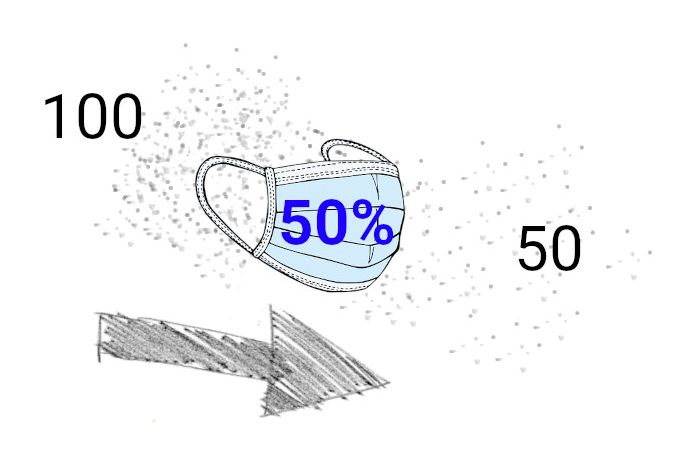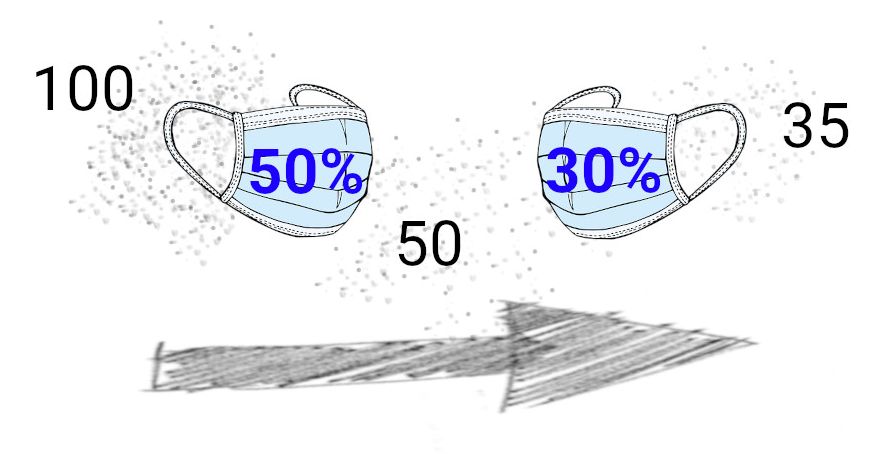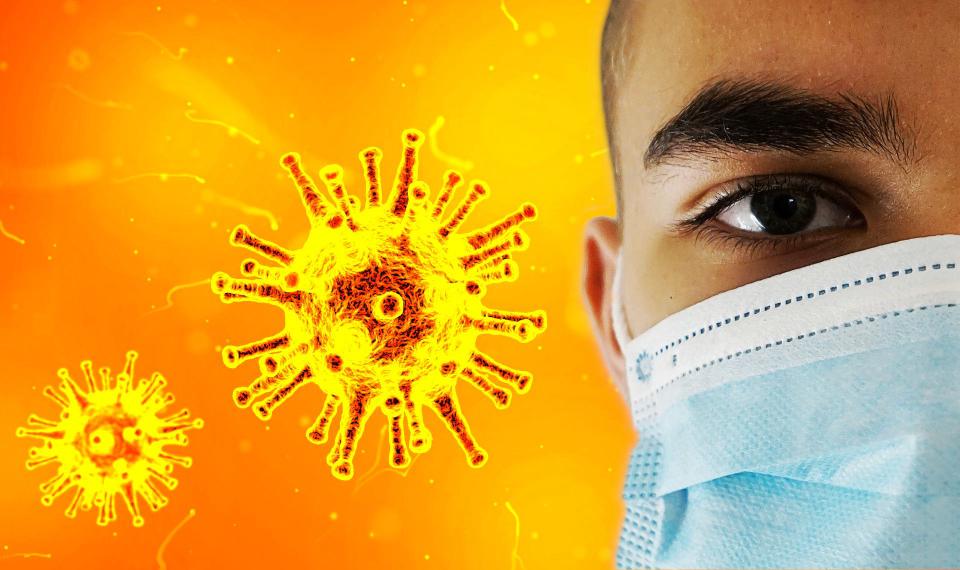Note: This is an automated translation (using DeepL) of the original German article.
A simple calculation example shows how the effectiveness of protective masks can be increased
Since the introduction of compulsory masks, there has been a debate about how effective wearing them actually is. It is undisputed that the effectiveness depends strongly on the mask or the mask material and that a self-sewn mask from an old T-shirt does not filter as well as an FFP3 mask. It is also clear that a plastic visor has no filtering effect, but only deflects the air, and masks with exhalation valves only protect when inhaled, but do not filter the air when exhaled.
The example of the plexiglass visors and exhalation valves makes it clear what masks are really about: mutual protection.

It is currently assumed that masks filter more effectively during exhalation (approx. 50% depending on type) than during inhalation (approx. 30%). So if a person wants to protect himself and wears a mask, he still inhales 70% of all viruses in the air. The mask therefore provides only very limited protection.

If a person wears the mask to protect others from himself, this mask catches 50% of the viruses when exhaled. This means that the other half of the viruses are still in the air. All persons around who are not wearing a mask inhale air with 50% of the viruses - which is 20 percentage points less than in the first example!

Even better, of course, is when all persons are wearing a mask. Because then the virus load of an infected person when breathing out through the mask is reduced to 50%. Of this 50%, 70% pass through the mask when inhaled. This means that “only” 35% (0.5*0.7 = 0.35 = 35%) of the viral load remains.
Compared to the 70% that you achieve by self-protection alone, this is half as much! So it definitely makes sense to wear the mask not (only) for your own health, but above all to protect others.
Source on the effectiveness of masks: Anna Davies, Katy-Anne Thompson, Karthika Giri, George Kafatos, Jimmy Walker, Allan Bennett, “Testing the efficacy of homemade masks: would they protect in an influenza pandemic?”, 2013
